
| Commissions |
| Artists' Studios |
| Spotlight |
| Events |
| endlicher | 3 X 3 | wattenberg/walczak | linkoln | eng | avair 1 | roach/whip | karasic/van gelder/coshow |
| symbiotic media group | singer | repetto/lovid | phiffer/zer-aviv | traub | osorio-goenaga | kato |
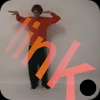
by Ursula Endlicher
with funds from the Jerome Foundation
html_butoh questions the way information is indexed on the Web; it enacts the "Global Top 500" websites and is choreographed by their real-time HTML structure. Small video clips show participants translating the "functionality" of each HTML tag into movement. The URLs, and therefore the "stage," changes every 3:28 minutes, running through 500 websites within a twenty-four hour cycle. html_butoh runs on the html-movement-library, an open-for-participation video clip database. In Butoh — a Japanese dance technique — the dancer "becomes" an image through her movements, which parallels to how a web browser scans through HTML and displays its content. By submitting to the html-movement-library every participant instantly becomes part of the html_butoh performance. [Needs Flash Player; High speed Internet connection (DSL/Cable or better); Speakers/Headphones. Optimized for Mozilla Firefox 2.0+, Opera 9.10+, Netscape 8.0+, and Safari 2.0+.]
Read a 1/review >>
Read a 2/review >>
Read a 3/review >>
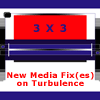
with funds from the National Endowment for the Arts
Turbulence and New Media Fix are pleased to announce the publication of 3 X 3: New Media Fix(es) on Turbulence - critical texts of works from the Turbulence archive. The three texts — published in English, Italian and Spanish — were written and translated by members and affiliates of New Media Fix. They include The Body in Turbulence by Josephine Bosma; Narrating with New Media: What Happened with Whatever has Happened? by Belén Gache; and Turbulence: Remixes + Bonus Beats by Eduardo Navas. The translations are by Lucrezia Cippitelli, Francesca De Nicolò, Raquel Herrera, and Brenda Banda Corona & Ignacio Nieto. Design by Ludmil Trenkov.
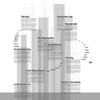
by Martin Wattenberg and Marek Walczak
with Chuck Crow, Johanna Kindvall, Warren Lehrer, Christiane Paul and Vivian Selbo
with funds from the Andy Warhol Foundation for the Arts
Everyone who has lived in an apartment has a story to tell. Gothamberg is a place to read, interact and exchange stories of lives in apartment buildings. Together, these tales of unwanted sounds and smells, lobbies and bathrooms, laundry room gossip and unexpected favors form a single collective building, "Gothamberg". Their experiences form the elliptical threads of inhabitation, a mnemonic quality expressing something of the shared nature of dwelling.

Prix Ars Electronica, 2007
Digital Communities Honorable Mention >>

by Abe Linkoln, with guest remixers Jimpunk and Subculture
with funds from the National Endowment for the Arts
DISCO-NNECT is an experimental video podcast that will broadcast weekly from March 20 to September 23. [Needs Quicktime plugin and Speakers/Headphones]

by Angie Eng, in collaboration with Rich Streitmatter-Tran and a collective of student interns in New York and Ho Chi Minh City
with funds from the Jerome Foundation and the National Endowment for the Arts
Urban Attractors and Private Distractors is a vlog project about privacy in public space in Eastern culture. It compares the results of Dérives in Ho Chi Minh (Vietnam) and New York City. The collective will address questions such as: How is a city constructed in a culture where the inhabitants have little experience of a private physical space? Do they adapt more readily to cyberspace which is both private / public simultaneously? How do Westerners reclaim their 'public space'? Organized Dérives in both cities will commence at the most public of spaces — the town square. Participants will submit videos as urban indicators of private and / or public to the vlog until the workshop meetings in June. Eng, the project director, will continue vlogging until the commencement of the physical installation in Fall 2007.
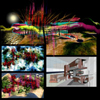
Brad Kligerman
with funds from the Jerome Foundation
AVAIR is an extended performance whose purpose is to investigate the nature of art making in the 3D synthetic environment of Second Life. It is an examination of policy and institution, as well as a reflection on place and art. Artists are given a stipend and technical support. They are expected to have an open studio, produce an exhibition, and make a public presentation. Their methodologies are documented here. Orchestrated through the classic structure of the gallery, the performances run at any time of the day or night, and create a platform for exchange between artist and audience. Brad Kligerman, Ars Virtua's first AIR, is winding down his 11 week tenure. He is fabricating three machines capable of extracting in-world data pertinent to discovering the rules of materiality inherent to Second Life: (1) the Calibration Machine for reading the world; (2) the Analogy Machine for learning about it; and, (3) the Mutation Machine for writing, inventing and transforming it. His exhibition will consist of interactive hyper-spaces made of images, ideograms and holograms. Join us for the opening on April 20 at midnight (SLT), and April 21 at noon (SLT)* at Ars Virtua. [Needs: go to Second Life and register for a free account; download the client and launch it; teleport to Ars Virtua]

by John Roach and Willy Whip
with funds from the Murray G. and Beatrice H. Sherman Charitable Trust
The Simultaneous Translator (SimTrans) is a Windows based audio interface that enables anyone to load audio streams and manipulate them in real time on the Internet. SimTrans makes the delays and fluctuations of the Internet visible and audible. The Internet becomes your collaborator as you create your mix, and the instability you usually try to avoid becomes a tool for creation. Distance and delay are manifest within the interface numerically and as a series of sliding heads; there is also a link to Google Earth where you can watch the dynamic flight of data travel between yourself and the audio source. LIVE PERFORMANCE: April 15, 2007 12:00 PM EST - 3:00 PM EST. Participants: Greg Davis (USA), Kenneth Goldsmith (USA), John Hudak (USA), Keyman (France), Lawrence Li (China), Mice69 (France), Miguel Ramos (Spain), Joe Reinsel (USA), John Roach (USA) and Willy Whip (France) [Needs Speakers/Headphones, Windows OS; Mac users can watch the performance using any player]
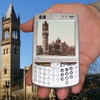
by Carmin Karasic, Rolf van Gelder and Rob Coshow, with special thanks to the HP mscapers team, Brett Stalbaum, and Jo Rhodes
with funds from the LEF Foundation
Designed for HP iPAQ 6900 series smartphones, Handheld Histories as Hyper-Monuments uses GPS and mobile technologies to address historic bias in Boston's public monuments. The artwork gathers non-official stories to socially construct hyper-monuments that exist as digital doubles, augmenting specific historic monuments. For example, imagine you are near the Old South Church in Boston, MA, USA. The smartphone sounds church bells to get your attention. It then displays an easily identifiable image of the Old South Church circa 2007, followed by images of the church that take you back in time. Finally you see the location as it was in its natural, wild state. You can send text, image and audio content to the website from the monument location via any internet enabled device. Or use any internet browser to view and add histories to the hyper-monuments.
Part of the Boston Cyberarts Festival, pick up a smartphone at the Judi Rotenberg Gallery, 130 Newbury Street, Boston :: April 21-28, 2007.
Read a review >>
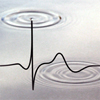
by the Symbiotic Media Group, Oklahoma University
with funds from mediaThe Foundation. Additional funds from the Museum of Science, Boston; the National Endowment for the Arts; Rhizome.org; and the University of Oklahoma Symbiotic Media Center, Lester Wilkinson Chair, College of Engineering, School of Computer Science, Symbiotic Computing Laboratory, and School of Art.
For the first time, two cities will be connected via the human pulse. This interactive installation uses Internet and radio-frequency identification (RFID) technologies to allow people in Boston and Oklahoma City to experience one another's pulses. Pulse Pool consists of two ten-foot, round pools of water — one located at the Museum of Science and the other at the Fred Jones Museum of Art. Visitors stand by the pool and wear computing devices that track their pulse. Each individual's pulse is represented in real time as a series of water drops released into the pool from above. By watching the ripples from the droplets, visitors can see their "pulse" meet and interact with the "pulse" of others beside the pool. In addition, the two pools relay information to one another via a web interface that causes corresponding pulses from the other city to become visible via LED lights under the water.
Co-presented with the Museum of Science, Boston and the Fred Jones Museum of Art, Oklahoma; April 23–29, 2007. Part of the Boston Cyberarts Festival and the Cambridge Science Fesitval.

by Brooke Singer
with funds from the Jerome Foundation and the National Endowment for the Arts
Superfund365, A Site-A-Day, is an online data visualization application with an accompanying RSS-feed and email alert system. Each day for a year Superfund365 will visit one toxic site currently active in the Superfund program run by the U.S. Environmental Protection Agency (EPA). We begin the journey in the New York City area and work our way across the country, ending the year in Hawaii. In the end, the archive will consist of 365 visualizations of some of the worst toxic sites in the U.S., roughly a quarter of the total number on the on the Superfund's National Priorities List (NPL). Along the way, we will conduct video interviews with people involved with or impacted by the Superfund program. Content changes everyday so be sure to visit often or use the subscribe tools to have content delivered to you. [Needs Flash plugin]
Read a 1/review >>
Read a 2/review >>
Read a 3/review >>
Read a 4/review >>
Read a 5/review >>
Read a 6/review >>
Read a 7/review >>
Read a 8/review >>
by Douglas Repetto and LoVid
with funds from the Murray G. and Beatrice H. Sherman Charitable Trust
Bonding Energy consists of a set of Sunsmile devices that collect and measure solar energy from seven geographically distributed sites around New York State: Columbia University, NYC; Rensselaer Polytechnic Institute, Troy; University of Buffalo; Colgate University, Hamilton; free103point9's Wave Farm, Acra; Experimental Television Center, Owego; and The Redhouse Arts Center, Syracuse. The light energy reaching the Sunsmiles' solar panels fuels a collaborative real-time data visualization on Turbulence.org. Part of the larger Cross Current Resonance Transducer (CCRT) project in which the artists are developing systems for monitoring, manipulating, and interpreting natural signals such as tidal patterns and wind, Bonding Energy is focused on solar energy. Bonding Energy is a model for distributed microenergy generation, inspired by SETI@home — which harnesses the collective power of personal computers distributed worldwide — and microcredit, a loan system that supports poor or unemployed people in underdeveloped countries. Small contributions from many individuals can produce significant results. [Needs: enable Java in your browser]
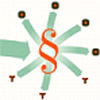
by Dan Phiffer and Mushon Zer-Aviv
with funds from the New York City Department of Cultural Affairs
Turbulence has commissioned ShiftSpace and now ShiftSpace commissions you. 10 development grants of up to $2,000 will be awarded to individuals and collectives using ShiftSpace as a platform to create new “Spaces” and “Trails”. By pressing the [Shift] + [Space] keys, a ShiftSpace user can invoke a new meta layer above any web page to browse and create additional interpretations, contextualizations, and interventions — which are called Shifts. Users can choose between several authoring tools - called Spaces — that allow web users to annotate, modify and shift the content of a page and through ShiftSpace, share that shift with the rest of the web. Trails are maps of shifts (shiftspace content) that create meta-layer navigation across websites. These trails might be used as a platform for collaborative research, for curating net art exhibitions, or as a way to facilitate a context-based public debate. Go to the commissions site, watch the introductory video, apply for a grant and help us spread the word. [Needs FireFox browser and software download]
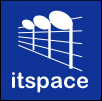
by Peter Traub
with funds from the New York State Music Fund, established by the New York State Attorney General at Rockefeller Philanthropy Advisors
ItSpace creates a network of pages within the social networking site MySpace. Instead of people, the pages feature everyday household objects from the artist's house. Each page has a photo of the object, a description, and most importantly, a 1-minute piece composed of samples of the object being struck, resonated, and so forth. All the pages, or objects, are 'friends' with each other, so that visitors who discover one object may jump to the others to see their profiles and hear their sounds. Visitors to the site are invited to create new ItSpace pages with pieces made from their own household objects and link those in as 'friends' of the original set. [Needs Speakers/Headphones]
Listen to an Interview >>
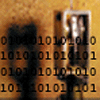
by Roberto Osorio-Goenaga
with funds from the New York State Music Fund, established by the New York State Attorney General at Rockefeller Philanthropy Advisors
BliK is an interactive installation and networked musical composition method based on collaborative "Web 2.0" principles. The composer / participant types directives / keywords — referencing one of the LEMUR ModBots — into a blog post to create a musical score. The LEMUR ModBots are a set of single-function percussive bots that work as a percussion ensemble. They reside at LEMURplex in Brooklyn, New York. Some are scrapers, some are shakers, some strike different surfaces. They each have their own name, for instance, "bucket" and "shake." By typing "bucket shake shake shake," into a blog post, the user causes both bots to improvise algorithmically, with the shake being 3 times more present in the section than the bucket. The user controls the tempo by typing keywords such as 'fast', 'slow', and 'medium'. [Needs Speakers/Headphones]
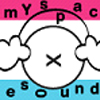
by Sawako Kato
with funds from the New York State Music Fund, established by the New York State Attorney General at Rockefeller Philanthropy Advisors
My Space Sound is an audio popup book about the village called MySpace. The story starts like this: "Once upon a time … there was a village called MySpace. It is the era when so-called 'Web 2.0' is still a novelty…" Users can participate in the story by entering their MySpace URL, as well as by just browsing the story. In a world composed of both facts and fictions extracted from the database, the audience gets a chance to rethink the chaotic social network space. This is just my story, and I am curious to know your story. My Space Sound is the artistic observations and everyday sketches of the imperfect processor named sawako about the state of networks and individuals. [Needs Mac OSX, Flash Player, Speakers/Headphones, and fast Internet connection]

by Michael Takeo Magruder
Continuum… reflects upon the evolution of our collective history through the real-time analysis of global news information networks. As no event transpires in isolation, each moment of our existence is defined by the sum of an infinite number of interconnected occurrences. Given that no individual can absorb and process the totality of this information, how can we obtain an informed notion of the present? [Needs Flash Player 8+ plugin and stereo audio]
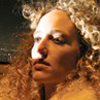
by Peter Horvath
In Boulevard we follow a striking woman, the passenger of a convertible car, driven by an unidentified driver through the city, passing its generic streets, billboards and motels, with an unknown destination. "Horvath's videos have a sense of grand drama; frenetic, contemporary anxiety; and an interest in the collision of the beautiful with the grave. This drama of sexual angst has shades of David Lynch's Mulholland Drive and the edge-of-the-earth angst of contemporary California Gothics such as Magnolia and Crash. The central figure is a by-turns haughty and vulnerable beauty, one of Horvath's reoccurring angst-laden women passing through the glamorous and tawdry landscape of Los Angeles' Laurel Canyon." - Felicia Feaster [Needs DSL/Cable access, Internet Explorer 5.0+ or Safari and the Flash 9 plugin are required for viewing]
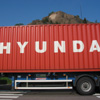
by David Crawford
David Joseph Bohm (born December 20, 1917 in Wilkes-Barre, Pennsylvania, died October 27, 1992 in London) was an American-born quantum physicist, who made significant contributions in the fields of theoretical physics, philosophy and neuropsychology, and to the Manhattan Project. (Wikipedia). The audio in this video comes from an interview that F. David Peat conducted with David Bohm. [Needs Flash player]
by Kevin Hamilton
Zeno Boundary collects portraits of places regarded as public, created according to a prescribed photographic system. Images uploaded by contributors are dynamically animated into a looped sequence of pans and zooms through the space. The project originated in Spring 2006 as part of the Mobile Studios project, in cooperation with curators of the 13 Kubikov collective in Bratislava, Slovakia. After touring with Mobile Studios through Eastern Europe, the project continues as part of the 2007 Depauw Biennial Exhibition, in Greencastle, Indiana. [Needs Flash player 8 and fast internet connection]
by Matthew Belanger, with Marianne R. Petit
We all have places that we feel connected to, but these places rarely stay the same. Disappearing Places is both an archive and collective map of places that no longer exist, at least not as they once did. Users can upload stories and images about a place, link them to a corresponding location or street address and tag them accordingly, as well as browse the stories and places other individuals have submitted.
Time Indefinite is both a repository of significant moments and timeline that charts where we collectively stand. Users can upload stories and images, tag them, and browse the stories and moments other individuals have contributed.
Upgrade! Boston is a monthly gathering of new media artists and curators that fosters dialogue and creates opportunities for collaboration within the media art community. At each meeting one or two artists/curators present work in progress and participate in a discussion. Upgrade! Boston is hosted by Art Interactive and is a node in the Upgrade! International network.
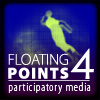
with funds from Emerson College
Emerson College and New Radio and Performing Arts, Inc. (NRPA) present OurFloatingPoints 4: Participatory Media (FP4) a speaker series that addresses the recent emergence of inexpensive, worldwide, and many-to-many publishing and communication media and focuses on how these media are transforming the relationship between cultural producers and consumers. FP4 is the fourth in an ongoing series of lectures and discussions planned with NRPA and its world-renowned website, Turbulence.org. (2/28): Ulises Mejias + Trebor Scholz; (3/28): McKenzie Wark + David Weinberger; (4/25): a panel discussion with Wagner James Au, John Lester , and John (Craig) Freeman; moderated by Eric Gordon.
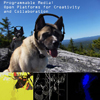
Open Platforms for Creativity and Collaboration
with funds from the New York City Department of Cultural Affairs and Pace Digital Gallery
Programmable Media I: Open Platforms for Creativity and Collaboration, a one day symposium held on March 2, 2007 at Pace University, explored two forms of current practice. First, the creation of original software to create tools and services for creative and social use, such as a freely available 3-D drawing tool and musical instrument, or a public commons meta layer conceived as a continuous public space for collaboration. Second, the creation of original work using the tools available within open platforms such as Second Life and MySpace to build community and raise awareness. With John (Craig) Freeman, Tom Igoe, Cary Peppermint, Amit Pitaru, Michelle Riel, Helen Thorington, Mushon Zer-Aviv, and Dan Phiffer.
